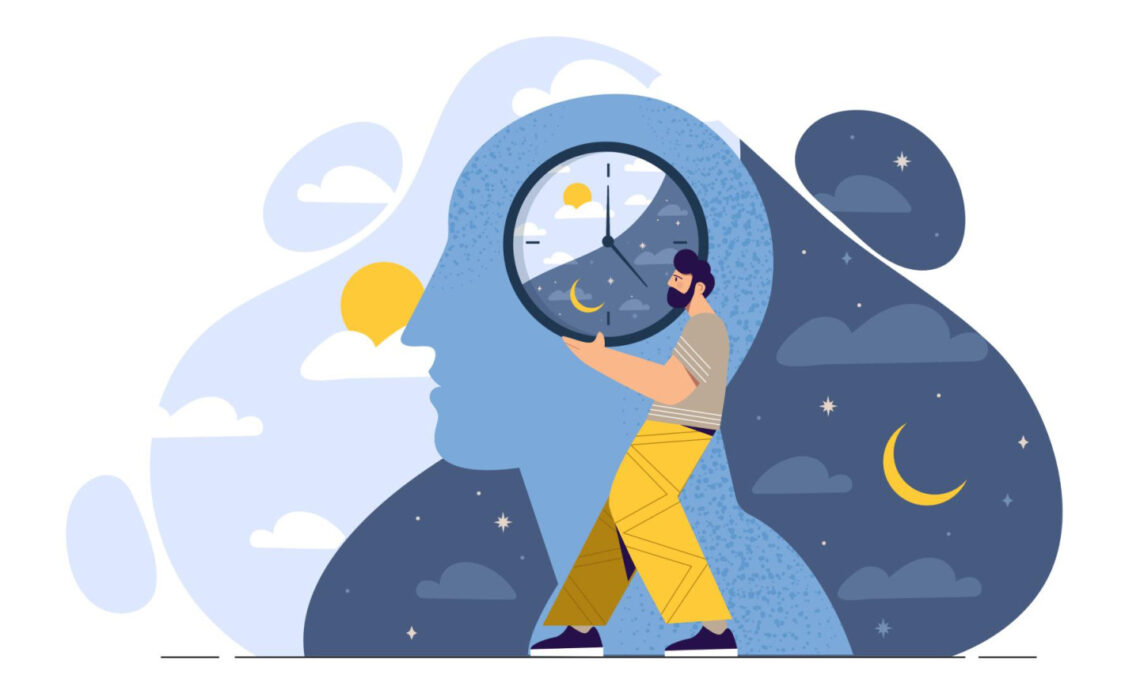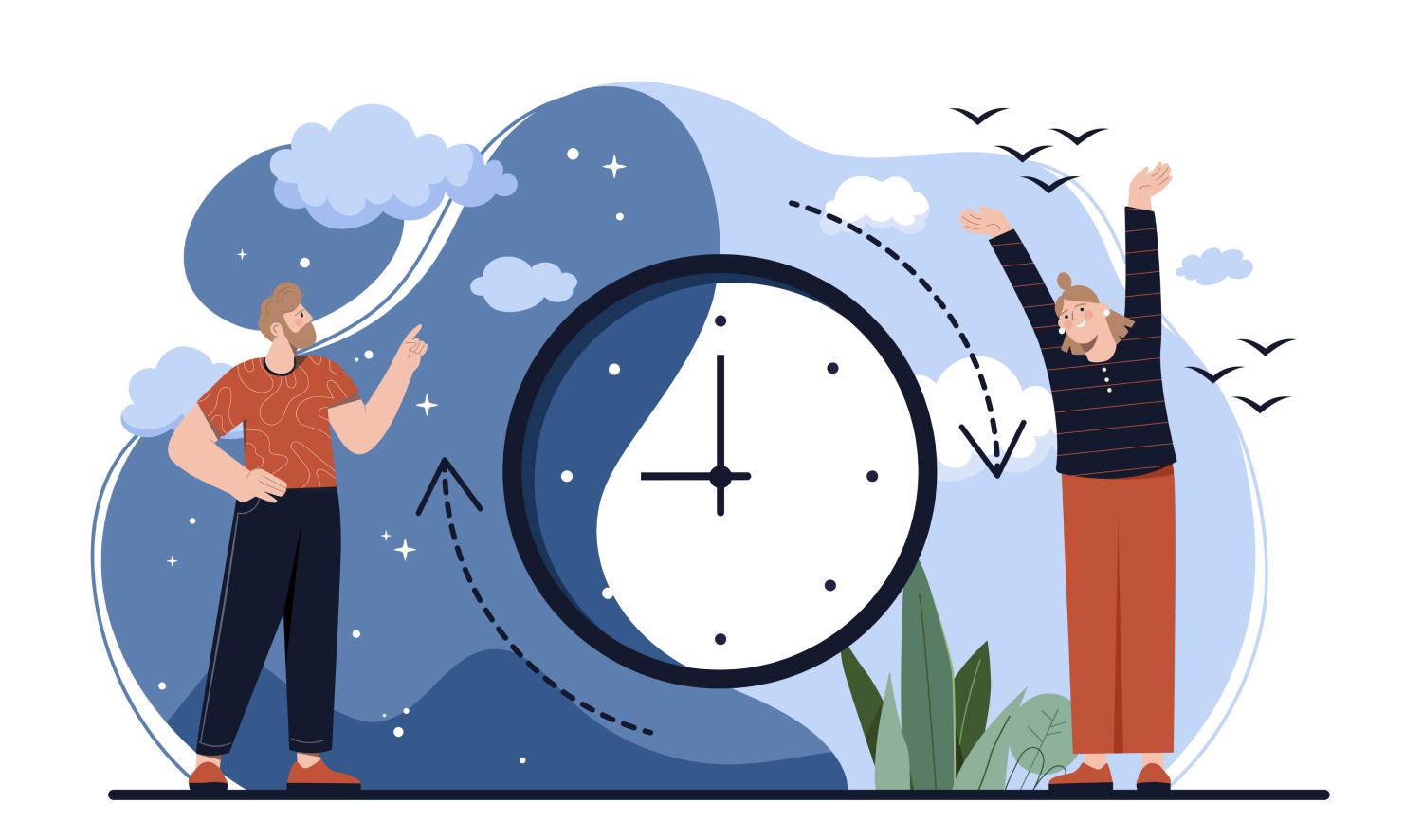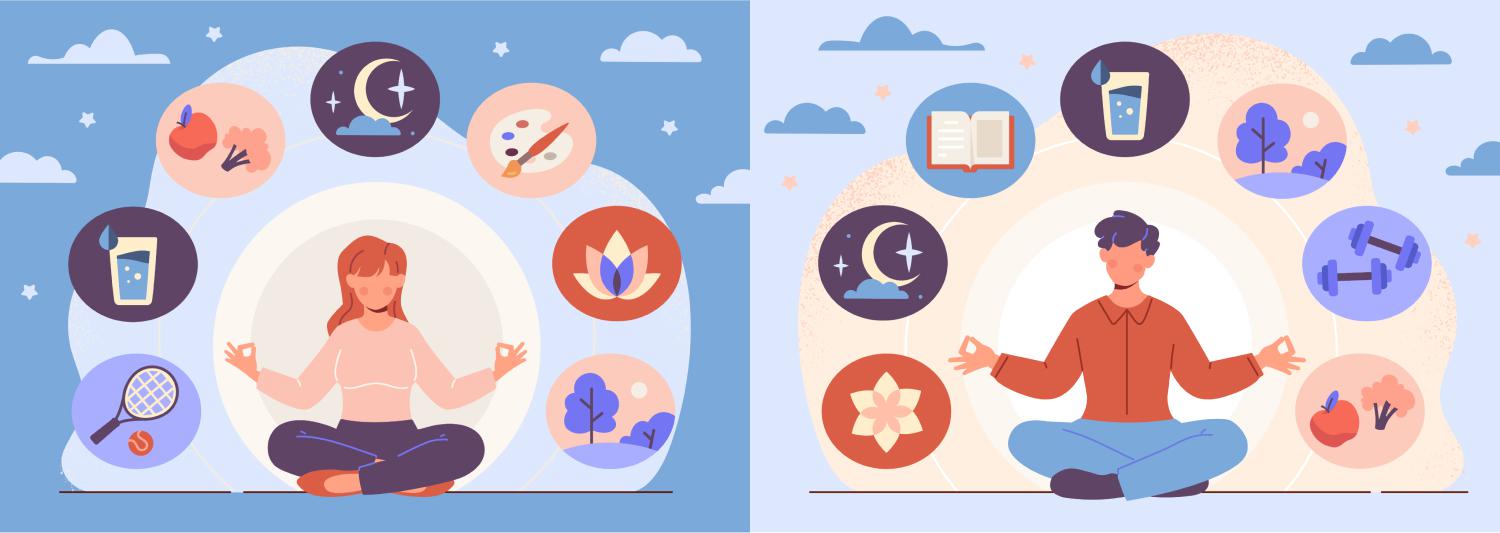
- What is this
- Types
- Violations
- Calculation
- How to set up
- Biorhythms by the hour
What are biorhythms?
Biorhythms are natural cycles that regulate the body's functioning. They can be compared to an internal clock that determines when we feel alert and energetic, and when we want to sleep or have a snack. In essence, biorhythms are an invisible conductor that helps our body function smoothly and efficiently throughout the day.
The influence of biorhythms on humans
Biorhythms regulate many physiological and psychological processes:
- self-esteem;
- mood;
- performance;
- appetite;
- a dream;
- the ability to learn and remember information.
Understanding these processes helps you adapt and maintain health throughout your life.
Types of biorhythms
High frequency biorhythms
High-frequency biorhythms have the shortest cycle – up to 30 minutes. They are responsible for microprocesses: heart rate, breathing, generation of impulses by neurons and muscle cells.
Ultradian biorhythms
The duration of ultradian rhythms is up to a day. They regulate the stages of sleep, the composition of blood and urine, the feeling of hunger and satiety.
Circadian biorhythms
The most well-known type is the 24-hour cycle, closely related to the day-night cycle. Circadian rhythms control sleep and wakefulness, affect hormone levels, secretion, body temperature, and blood pressure. In essence, they synchronize the body with the external environment and ensure optimal functioning throughout the day.
Infradian biorhythms
Infradian biorhythms have the longest cycle – more than a day. This includes, for example, the menstrual cycle in women and seasonal mood changes due to the reduction of daylight hours.

The length of biorhythms varies from 30 minutes to a day.
Biorhythm disorders
Disturbances of biorhythms, or desynchronosisoccur when the body's internal clock is thrown out of its natural rhythm. The cause may be:
- stress;
- stress and anxiety;
- change of time zones;
- incorrect sleep pattern;
- night shift work;
- some diseases.
In general, everything that brings confusion into the usual stable routine.
The consequences of such chaos can affect any of the body's systems:
- due to desynchronosis, blood pressure increases, the risk of heart attack and stroke increases;
- from the gastrointestinal tract, desynchronosis can cause heartburn, constipation, diarrhea and other digestive problems;
- the disorder weakens the immune system, making the body more susceptible to infections and diseases;
- Often, confusion in biorhythms is accompanied by irritability, anxiety, depression, memory loss and concentration problems. Insomnia, difficulty falling asleep and daytime sleepiness may develop.
That is why it is so important to maintain biorhythms in harmony: follow a routine, get enough sleep, eat right and avoid stress.
Calculation of biorhythms

To find out your chronotype, try keeping a sleep diary. Record the time you fall asleep and wake up, the quality of your sleep, track your daytime activity and mood. This will help you identify patterns. The Horn-Ostberg test will help you determine whether you are a night owl or a lark.
By understanding your biorhythms, you can determine what times of day are best for activity and what times of day are best for rest, and create a schedule that aligns with your natural cycles to be as productive as possible.
How to adjust biorhythms
Advice from Irina Zavalko:
- Establish a sleep routine and stick to it. Go to bed and wake up at the same time every day. This will help your body adjust to a certain rhythm and improve the quality of sleep. It is important for the body to understand when to get up and when to go to bed. Calculate how much time you need to get enough sleep and what time you need to go to bed to do this.
- At least an hour before bed, dim the lights and put away your gadgets. Blue light interferes with the production of melatonin, the sleep hormone. After waking up, it is advisable to find yourself in natural light as soon as possible; during the day, it also helps regulate circadian rhythms. But in the evening, it is better to avoid bright lighting; the lighting should be dim.
- Maintain a routine of eating, working and being active. Avoid heavy food and caffeine before bed. If a person gets up and goes to bed at different times, one day physical activity falls in the evening, mental activity in the morning, and the other day it’s the other way around, the body simply doesn’t understand what to prepare for. This leads to desynchronosis.

By understanding your biorhythms, you can determine what time of day is best for activity and what time of day is best for rest.
Biorhythms by the hour
To plan more effectively, get more done, and stay in a good mood, it is worth considering how the processes in the body proceed during the day. Let's consider what the biorhythms of an adult who starts the day at 6-7 am will look like.
- 5-6 hours: At this time, the level of cortisol, the stress hormone, begins to rise. This is how the body prepares for awakening, blood pressure and blood sugar levels increase.
- 7-8 hours: The ideal time for breakfast, as the digestive system is most active. It is a good time to start work or study – it will be easier to concentrate.
- 10–12 hours: peak of mental activity. The brain works most efficiently, so this is the ideal time for solving complex problems, making important decisions and creative work.
- 14–15 hours: This period is the time of the afternoon energy slump, when many people feel sleepy. It is advisable to take a short break or a light walk in the fresh air.
- 17–19 hours: The window is optimal for physical activity. At this time, coordination of movements is better.
- 21–22 hours: Melatonin begins to be produced. The body prepares for sleep, body temperature drops, and metabolism slows down.
- 23-01 time: a phase of deep sleep during which the body recovers.
